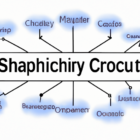In recent years, Natural Language Processing (NLP) has emerged as a groundbreaking technology making waves across different fields. As a subset of artificial intelligence (AI), NLP enables computers to understand, interpret, and respond to human language in a meaningful way. This blog post explores the vast applications of NLP, its significance in various industries, and what the future holds for communication technologies driven by machine learning.
Understanding Natural Language Processing
Natural Language Processing encompasses a range of techniques used to analyze and synthesize human language. With advancements in machine learning, NLP systems are now capable of performing complex tasks such as language translation, sentiment analysis, and Chatbot development, significantly enhancing human-computer interaction.
Applications of NLP in Various Industries
The applications of NLP are extensive and continually evolving, touching industries such as:
- Healthcare: NLP is used to analyze patient records, streamline documentation, and improve patient care through speech recognition technologies.
- Finance: In the finance sector, NLP aids in sentiment analysis, which helps investors make informed decisions by examining market trends based on public sentiment and news analytics.
- Marketing: Companies are leveraging NLP to create personalized marketing strategies, analyzing customer feedback, and enhancing customer engagement through targeted campaigns.
- Customer Service: Many businesses utilize AI-driven chatbots powered by NLP to handle customer inquiries, resolve issues promptly, and enhance user experience.
The Importance of NLP in Artificial Intelligence
NLP not only plays a crucial role in AI but also bridges the gap between human language and machine understanding. By enabling machines to comprehend the nuances of language, NLP contributes to more intelligent systems capable of processing and generating human-like responses.
The Future of Natural Language Processing
The future of NLP appears promising, with ongoing research that aims to improve the efficiency and effectiveness of these systems. Innovations in deep learning and neural networks are set to enhance NLP capabilities, making interactions even more natural and intuitive.
Conclusion
As Natural Language Processing continues to evolve, its transformative impact on industries and communication cannot be overstated. By facilitating better understanding between humans and machines, NLP is paving the way for an advanced era of human-computer interaction. Stay tuned for more updates and breakthroughs in this exciting field!




